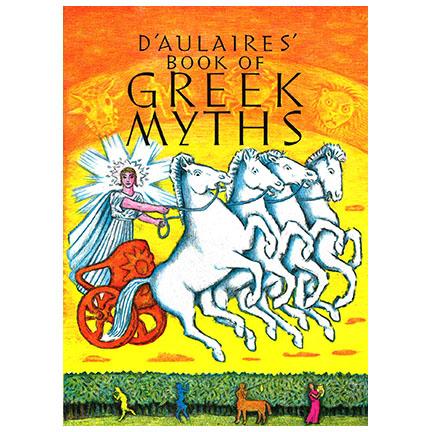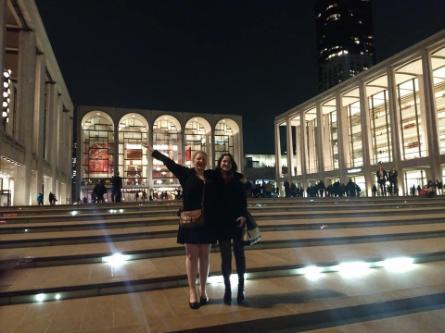
Ruby Johnson ‘21 hails from Medford, Oregon. She has yet to declare her major at Connecticut College but has an interest in education, American studies, Classics, and music. She sings as a soprano in Camel Heard, Connecticut College's advanced vocal ensemble, and is a member of the Connecticut College Figure Skating Club, where she teaches learn-to-skate lessons to local children on the weekends. She is working on designing her own major and is planning on declaring a Pathway this coming fall.
When I was young, there was one book that always had a special place on the top of my shelf: “D'Aulaires' Book of Greek Myths.” Mine was a big hardcover book, and its cover featured a dignified charioteer riding amidst a sky splashed with vibrant shades of yellow and orange. Whenever I couldn't fall asleep, I'd flip open that book and let myself fall into the stories. There was a whole different world hidden in that book—a world of terrifying monsters and fantastical heroes. I didn't know much about the ancient Greeks when I first started reading that book, but I knew that I wanted to jump into the pages and explore that world myself.
As a college student, I never thought that this fascination would lead me anywhere. But when I saw the class called "Classical Mythology" in the fall of my first year, my curiosity was piqued, so I followed my gut. In that class, I got to read the real texts that inspired the stories I loved so much as a child; the words of Sophocles, Euripides, Aeschylus, and Homer filled my days.
On one chilly November night, my mythology professor, Visiting Professor of Classics Nina Papathanasopoulou, took my class on a trip out to Norwich to visit the Slater Museum. The sculptures that fill that museum are cast reproductions of the originals but standing amongst them was still markedly special. It's one thing to read about something in your textbook, but it's something entirely different to stand at the foot of the grand figure of Apollo from the West Pediment of the Temple of Zeus, or to peer into the desperate eyes of Laocoön as marble snakes slither around his twisting body.
This semester, after four weeks of studying Aeschylus' “Oresteia” and Sophocles' “Electra,” professor Papathanasopoulou took my Greek tragedy class on a trip to New York City to see Strauss’ “Elektra” at the Metropolitan Opera. Sitting way in the top of the opera house, I had a bird's eye view of the stage. As I sat there, my breath was taken away. As the powerful singers wailed their grief and heartache into the still air of the opera house, I felt a growing kinship with the countless audiences who had watched this story unfold throughout history. After almost 2,500 years, the same story that captured ancient Greek audiences' attention had grabbed mine. Sitting in that opera house, I traveled back in time.
At this point, I don't really know where my love of classics is going to take me. But I do know that getting to know an ancient culture in a tangible way is an irreplaceable experience. Reading about the ancients in my books and talking about their culture in a classroom has its place, but it is through real experience in these subjects that the lessons become truly ingrained within me. In essence, these classes at Connecticut College are wonderful for one simple reason; they bring learning to life.
